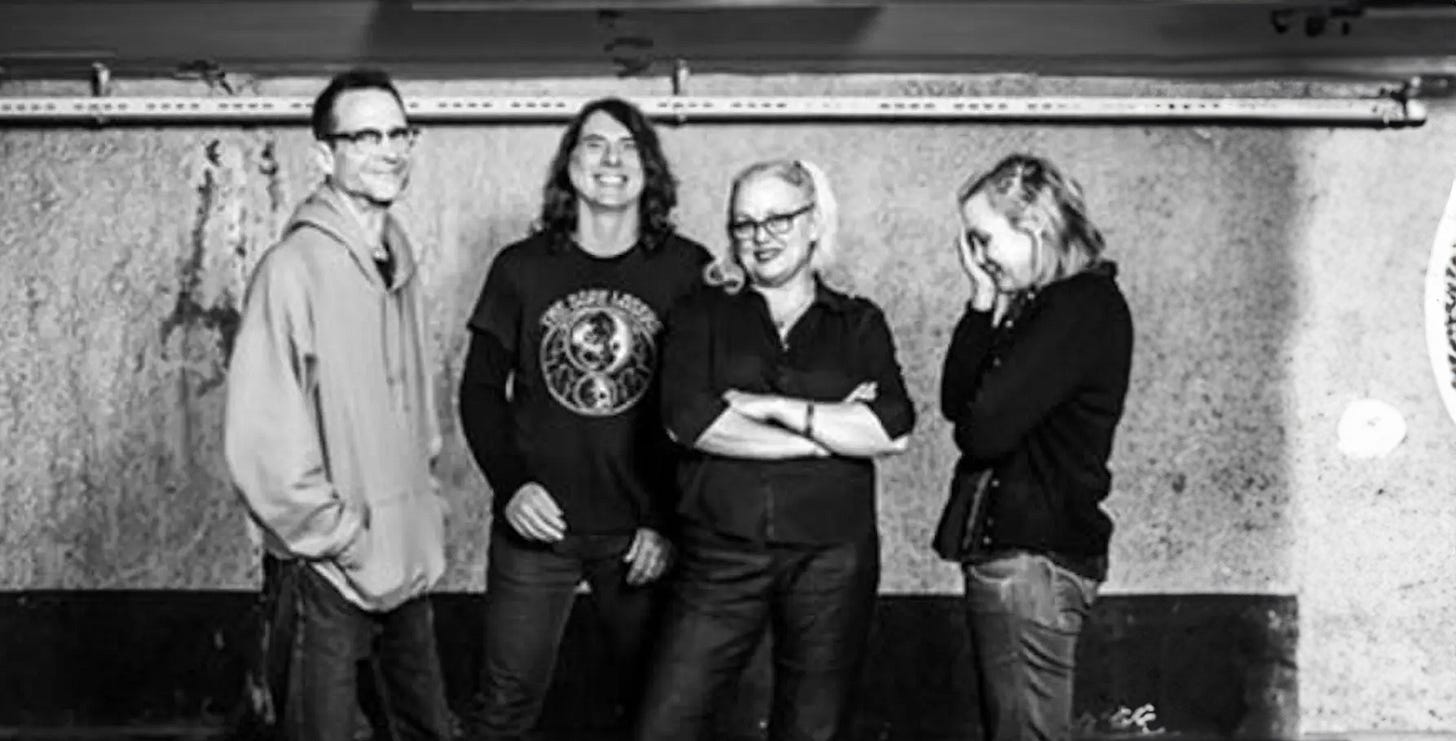Bettie Serveert | History of the Band
Dutch Alternative Rock Icons: A Deep Dive into Their 90s Indie Evolution and Legacy
Bettie Serveert emerged in the early 1990s, a Dutch band that carved a unique niche in the alternative rock landscape. The band was formed in 1990 in Arnhem, Netherlands, by vocalist Carol van Dijk, guitarist Peter Visser, bassist Herman Bunskoeke, and drummer Berend Dubbe. The members had known each other from previous musical projects, but it was their shared vision and chemistry that led to the creation of Bettie Serveert. Their name, intriguingly, translates to "Bettie Serves" and is a homage to Dutch tennis player Betty Stöve.
Bob Ramakers suggested this artist for a future Dig Me Out podcast episode. Each month, our Patrons are presented with a selection of albums suggested by listeners and asked to vote for their favorite.
Musical Style and Evolution
From the outset, Bettie Serveert's sound was characterized by a blend of jangly guitar riffs, melodic hooks, and van Dijk's distinctive voice, which carried a mix of vulnerability and strength. Their early work drew comparisons to bands like R.E.M. and Throwing Muses, embodying a college rock aesthetic that resonated with fans of the burgeoning indie rock scene.
As the decade progressed, Bettie Serveert's music evolved, incorporating elements of grunge, power pop, and even hints of psychedelia. This evolution was not a drastic shift but rather a natural growth, reflecting the band's willingness to experiment while staying true to their core sound. Their lyrical content also matured, with themes ranging from personal introspection to broader social commentary.
Discography and Notable 90s Albums
"Palomine" (1992) Released on Matador Records, "Palomine" was Bettie Serveert's debut album and remains their most acclaimed work. The album was recorded at the Sound Enterprise Studio in Weesp, Netherlands, with producer Evert Kaatee. It featured standout tracks like "Kid's Allright" and "Tom Boy," which showcased the band's knack for crafting catchy yet emotionally resonant songs. The album received widespread critical acclaim and gained the band a loyal following, especially in the United States, where it became a college radio staple.
"Lamprey" (1995) Their sophomore effort, "Lamprey," also released on Matador Records, saw the band delving into a darker, more introspective sound. The production, handled by the band and engineer Phil Nicolo, provided a rawer edge compared to their debut. Tracks like "Ray Ray Rain" and "Keepsake" highlighted the band's ability to blend melancholy with melodic sensibilities. While it didn't achieve the same level of commercial success as "Palomine," it was praised for its artistic growth and depth.
"Dust Bunnies" (1997) "Dust Bunnies," produced by Bryce Goggin and released on Beggars Banquet Records, marked another shift in Bettie Serveert's musical direction. The album featured a more polished sound and included singles like "Rudder" and "What Friends?" that received airplay on alternative rock stations. Critics noted the band's refined songwriting and the seamless integration of diverse musical influences. The album's artwork, designed by Piet Schreuders, reflected the band's quirky and creative approach.
Throughout the 1990s, Bettie Serveert received positive reviews from critics, who often praised their consistency and willingness to evolve. Publications like Rolling Stone and NME lauded their debut album, with Rolling Stone calling "Palomine" "a near-perfect blend of melancholy and melody." While some critics felt subsequent albums didn't capture the same raw energy, they acknowledged the band's artistic integrity and growth.
Influence and Legacy
Bettie Serveert's influence on the 90s alternative rock scene is notable, especially among indie rock circles. Their ability to blend catchy melodies with thoughtful lyrics inspired numerous bands that followed. Artists such as Sleater-Kinney and The Breeders have cited Bettie Serveert as an influence, particularly praising Carol van Dijk's vocal style and Peter Visser's inventive guitar work.
The band's legacy extends beyond their 90s output. After Berend Dubbe left the band in 1998, Bettie Serveert continued to release music, maintaining their relevance and evolving their sound into the new millennium. Dubbe pursued a solo career and formed the band Bauer, further contributing to the Dutch music scene.
Bettie Serveert's journey through the 1990s is a testament to their resilience and creativity. They navigated the decade with a series of albums that not only defined their sound but also contributed to the broader tapestry of alternative rock. Their story is a vital piece of the 90s music puzzle, illustrating the era's spirit of experimentation and authenticity.
Sources
AllMusic
RateYourMusic





